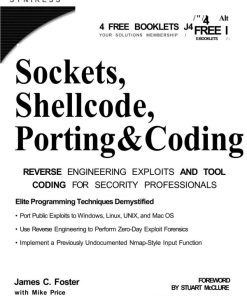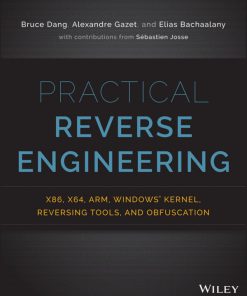Reversing Secrets of Reverse Engineering 1st Edition by Eldad Eilam 0764574817 9780764574818
Original price was: $50.00.$25.00Current price is: $25.00.
Authors:Eldad Eilam , Series:Computer Science [99] , Tags:Computers; Software Development & Engineering; General; Programming , Author sort:Eilam, Eldad , Ids:9781118079768 , Languages:Languages:eng , Published:Published:Dec 2011 , Publisher:John Wiley & Sons , Comments:Comments:Beginning with a basic primer on reverse engineering-including computer internals, operating systems, and assembly language-and then discussing the various applications of reverse engineering, this book provides readers with practical, in-depth techniques for software reverse engineering. The book is broken into two parts, the first deals with security-related reverse engineering and the second explores the more practical aspects of reverse engineering. In addition, the author explains how to reverse engineer a third-party software library to improve interfacing and how to reverse engineer a competitor’s software to build a better product. * The first popular book to show how software reverse engineering can help defend against security threats, speed up development, and unlock the secrets of competitive products * Helps developers plug security holes by demonstrating how hackers exploit reverse engineering techniques to crack copy-protection schemes and identify software targets for viruses and other malware * Offers a primer on advanced reverse-engineering, delving into “disassembly”-code-level reverse engineering-and explaining how to decipher assembly language













